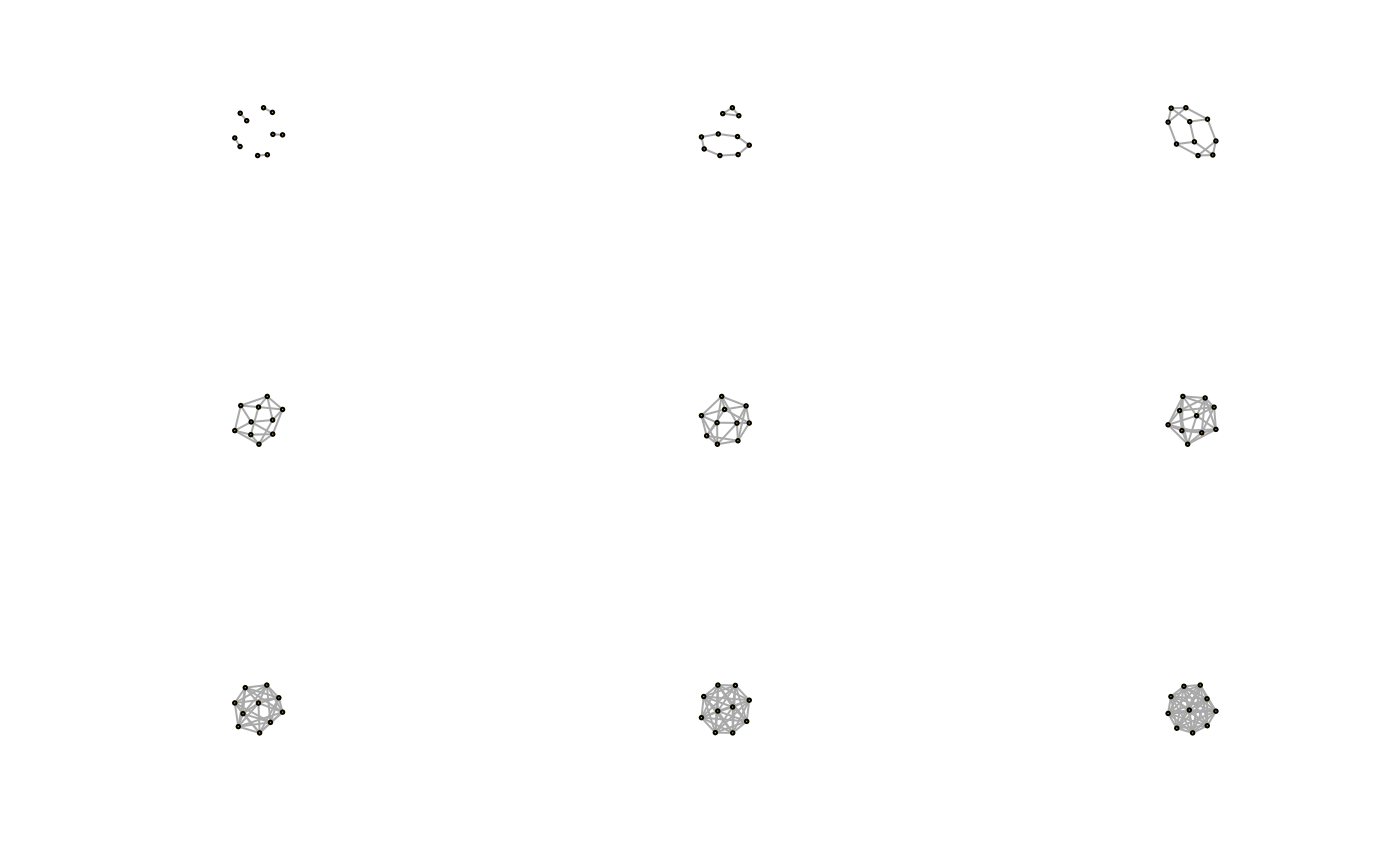Generate a random graph where each vertex has the same degree.
Arguments
- no.of.nodes
Integer scalar, the number of vertices in the generated graph.
- k
Integer scalar, the degree of each vertex in the graph, or the out-degree and in-degree in a directed graph.
- directed
Logical scalar, whether to create a directed graph.
- multiple
Logical scalar, whether multiple edges are allowed.
Details
This game generates a directed or undirected random graph where the degrees of vertices are equal to a predefined constant k. For undirected graphs, at least one of k and the number of vertices must be even.
The game simply uses sample_degseq() with appropriately
constructed degree sequences.
See also
sample_degseq() for a generator with prescribed degree
sequence.
Random graph models (games)
erdos.renyi.game(),
sample_(),
sample_bipartite(),
sample_correlated_gnp(),
sample_correlated_gnp_pair(),
sample_degseq(),
sample_dot_product(),
sample_fitness(),
sample_fitness_pl(),
sample_forestfire(),
sample_gnm(),
sample_gnp(),
sample_grg(),
sample_growing(),
sample_hierarchical_sbm(),
sample_islands(),
sample_last_cit(),
sample_pa(),
sample_pa_age(),
sample_pref(),
sample_sbm(),
sample_smallworld(),
sample_traits_callaway(),
sample_tree()
Author
Tamas Nepusz ntamas@gmail.com
Examples
## A simple ring
ring <- sample_k_regular(10, 2)
plot(ring)
 ## k-regular graphs on 10 vertices, with k=1:9
k10 <- lapply(1:9, sample_k_regular, no.of.nodes = 10)
layout(matrix(1:9, nrow = 3, byrow = TRUE))
sapply(k10, plot, vertex.label = NA)
## k-regular graphs on 10 vertices, with k=1:9
k10 <- lapply(1:9, sample_k_regular, no.of.nodes = 10)
layout(matrix(1:9, nrow = 3, byrow = TRUE))
sapply(k10, plot, vertex.label = NA)
 #> [[1]]
#> NULL
#>
#> [[2]]
#> NULL
#>
#> [[3]]
#> NULL
#>
#> [[4]]
#> NULL
#>
#> [[5]]
#> NULL
#>
#> [[6]]
#> NULL
#>
#> [[7]]
#> NULL
#>
#> [[8]]
#> NULL
#>
#> [[9]]
#> NULL
#>
#> [[1]]
#> NULL
#>
#> [[2]]
#> NULL
#>
#> [[3]]
#> NULL
#>
#> [[4]]
#> NULL
#>
#> [[5]]
#> NULL
#>
#> [[6]]
#> NULL
#>
#> [[7]]
#> NULL
#>
#> [[8]]
#> NULL
#>
#> [[9]]
#> NULL
#>